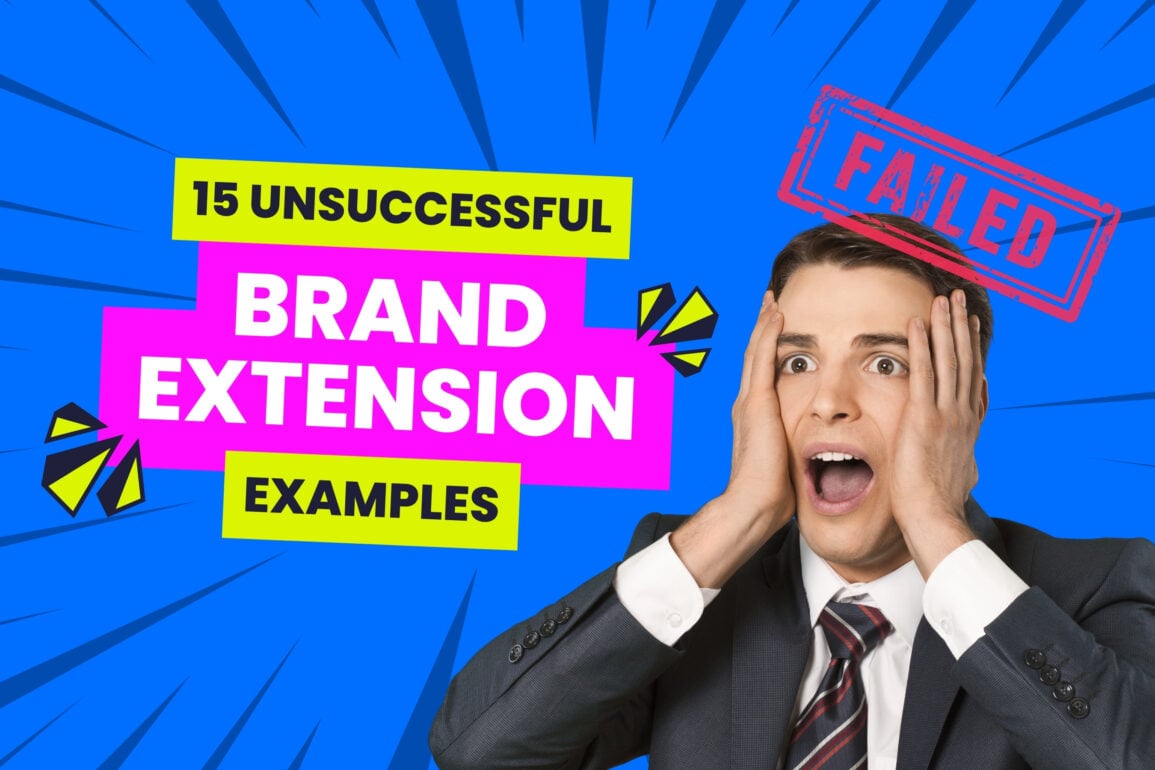Mastering the message: The best brand script example framework

If you’re looking for a brand script example and framework to help you master your own messaging strategy, you’re in the right place. A brand script is an incredible resource for businesses and their teams, helping to ensure you send a powerful, and consistent message to your audience.
The right script will help you identify your potential customers, the problems they need to solve, and the goals they want to achieve. It will also help you determine how to position your company as a valuable resource to your target audience.
Every time you advertise your products or services, you can turn to your brand script for an insight into the “narrative” you want to build for your brand.
Here, we’re going to outline the core components of the “storybrand framework” for brand scripting, and guide you through the process of designing your own effective brand script.

What is a brand script?
A brand script, otherwise known as a “storybrand brandscript”, is the blueprints for your company’s marketing messages. It outlines who your audience is, their challenges and goals, and the role you play in your customer’s lives.
Essentially, brand scripts ensure you can master the art of storytelling, to build connections with your customers, and increase your chances of sales. Small businesses and large enterprises alike both follow the principles of “storybrand” marketing.
The concept of the “brand script” was originally introduced by Storybrand founder, Donald Miller.
He recognized the importance of storytelling in forming human connections. Miller noticed that human beings are naturally wired to “seek out stories”. They’re how we learn about the world around us, and share information.
The story a brand tells its customers through marketing messages is how a company helps people “envision” the role the company will play their life. Nike positions itself as a company that empowers people from all backgrounds to achieve their athletic goals.
Alternatively, Apple’s story positions it as a company dedicated to giving consumers straightforward yet innovative experiences with technology.
While you can use insights from your brand positioning, mission, and vision statement to build your company’s narrative, a brand script makes life a little easier. It consolidates everything your team needs to know to send the right marketing message into a simple step-by-step guide.

The ultimate brand script example framework
To help companies navigate the process of creating a comprehensive brand script, Miller designed his “Storybrand framework”. This brand script templates breaks the aspects of your company’s story down into 7 core areas, to help inform your marketing strategies.
Section 1: The character
The first segment of your brand script focuses on the “main character” in your company’s narrative: your target customer. Your customer is the hero of the story in your script. They’re a protagonist that has a specific goal they need to achieve, or a challenge they need to overcome.
Your job when writing your brand script, is figuring out who your hero is, and what they need.
While it’s tempting to be relatively “vague” when identifying your target audience, the best strategy is often to be as specific as possible. No matter how great your products or services are, there will be one particular type of customer that can benefit from them more than most.
Ask yourself:
- What are the characteristics of my target audience? What’s their average age range, where are they located, and how do they typically interact with companies or research products?
- What are my customer’s challenges? Which problems do they want to overcome, or what specific goals do they want to achieve?
- What’s the aspirational identity of my customer? Do they see themselves as innovators, adventurers, creators, or something else?
Brand script example
To give you an idea of how you might identify your “main character” in your brand script, here’s an example. Tesla is a company that sells innovative electric vehicles. Their target market consists of innovative individuals, looking to access high-quality cars, while protecting the planet.
The hero statement for Tesla’s main character might look something like this: “Our customers are affluent individuals who value sustainability and quality. They want to protect the planet, while accessing the latest cutting-edge driving experiences.”
Section 2: The problem
The next step you’ll take when developing a great story for your brand script is to dive deeper into the problems your customers have, or the challenge they need to overcome. In every story, just as every main character in a story has a goal, such as “taking the one ring to Mordor” in the Lord Of The Rings, they also have problems to fix.
Miller’s brand script template suggests there are three main types of problems faced by customers:
External problems
External problems are the “physical barrier” your character has to overcome to achieve their goal. In the case of a car company, the “external” problem the character would need to overcome involves having access to transportation.
If your company sells smartphones, then the “problem” your customers would need to overcome could be an issue with communication.
Internal problems
Internal problems look at how customers feel about the issue they’re facing. If a customer’s “external” problem was that the were spending too much time and money on a marketing strategy that didn’t work, they might feel exhausted and frustrated.
In your marketing materials, addressing the “internal” problem helps give customers a better understanding of how your solution will benefit them. Slack doesn’t just say it sells collaboration software, it says it makes communicating with teams easier, and more fun.
Philosophical problems
The final type of problem characters face in stories, are “philosophical” issues. Identifying these problems means taking a broader look at why it’s an issue for your customers to be burdened by their internal and external problems in the first place.
For example, Tesla highlights the importance of protecting the planet from growing levels of emissions, with its eco-friendly cars. The wider “philosophical problem” customers face is that they want access to vehicles, but they don’t want to have a negative impact on the environment.
Brand script example
Let’s look at HubSpot, the software company that sells customer service, sales, and marketing solutions to businesses for this example. The company solves the “external” problem of limited access to data and automation tools.
The software offered by the brand addresses “internal” problems of fatigue and confusion, by giving customers an easier way to build campaigns and connect with customers.
The company also addresses the “philosophical” problem of companies being unable to deliver personalized experiences to customers, and pave the way for data-driven growth.
Section 3: The guide
This is the section of your brand script where your company finally enters the narrative. In any good story, the main character has a “guide” to help them in their journey. Harry Potter had Dumbledore, and Luke Skywalker had Yoda (plus Obi-Wan Kenobi).
Your job with this section of your brand script, is to explain how your company acts as the “guide” to your customers. In other words, how do you help them to solve their problems?
According to Miller, to position your company as an effective guide, you need to show two things in all of your branding and marketing efforts: empathy and authority.
Showing empathy is all about demonstrating to your customers that you understand their issue. For instance, the cosmetics company Lush identified their customer’s problem as having limited access to naturally and ethically sourced products.
To demonstrate their understanding of this issue, the company produces blogs, and even videos offering insights into how they make their products.
Demonstrating authority is about convincing your audience that you have the expertise and skills required to help them. Often, the best way to do this is by showcasing reviews, testimonials, and customer success stories on your website.
Here at Fabrik Brands, we publish case studies to demonstrate to other clients how we’ve successfully helped create and enhance brands.
Brand script example
For the “Guide” section of your brand script, all you need is a statement or two outlining how you support your customers. Salesforce demonstrates its position as an effective guide in a range of ways, sharing customer success stories, hosting events to educate consumers, and sharing content.
The company even demonstrates empathy and authority by creating training and educational resources for users of its software. You could create your own online course, webinars, and similar resources to demonstrate your “guidance” ability here.
Section 4: The plan
The “plan” section of your brand script is all about showing customers how easy it is to do business with you. The human brain needs direction, and an insight into what to do next.
In movies and books, the “guide” in the narrative articulates a plan for the hero to reach their goal. In the Lord of the Rings, for example, Gandalf maps out a route for Frodo and the Fellowship, and helps them overcome challenges throughout the journey.
In the same way, you need to map out a strategy for your customers. You need to show potential clients how they can accomplish their goal, and what you’re going to do to help them.
Miller’s storybrand brand scripts suggests breaking your plan down into three chronological steps.
For a software company, these steps could include:
- Scheduling a call.
- Downloading and installing the software.
- Using specific features to achieve certain goals.
While you might have fewer than three steps involved in your plan, it’s usually not a good idea to include more. The more steps a customer needs to take to overcome their pain points and achieve their goals, the more they’re likely to avoid working with you.
Brand script example
For this section of our brand script example, we’re going to use ourselves as a reference.
Fabrik helps companies to achieve their branding goals by:
- Encouraging website visitors to schedule a conversation with us.
- Working with our clients to establish what kind of branding support they need.
- Guiding customers through the process of implementing their new brand.
Section 5: The call-to-action
Now your customer understands what they need to achieve their goal, it’s time to convince them to take action. In movies and books, there’s usually a “trigger moment” that forces someone to do something.
In Lord of the Rings, the “trigger moment” is the prospect of Middle Earth being destroyed. In Star Wars, Luke discovers the force, and has to undergo training to learn how to use his powers. When you’re creating your brand story, you need to think about what will push your customers to act.
Don Miller suggests having two different types of “CTA”. There’s the Direct call to action, or “Primary CTA”, which invite customers to do business with you. You might tell customers to buy your product, download your software, or place an order.
The transitional CTA encourages customers to move further through the buying journey. Transitional CTAs don’t ask customers to purchase something straight away. For instance, you might encourage customers to “learn more” about your offering by visiting your website.
Brand script example
For this example, let’s take a look at the Meta website homepage. The page introduces customers to the products they can buy from Meta, such as the Quest 2 VR headset, and Ray-Ban smart glasses.
When scrolling through the page, customers can choose whether they want to add an item to their cart (direct CTAs), or “learn more” (the transitional CTA):

Section 6: Avoiding failure
Part of what makes a story so engaging, is that audiences understand what’s at stake if the protagonist doesn’t achieve their goals. In Star Wars, if Luke can’t destroy the Death Star, billions of people (and other creatures) could die.
While the risks of failure for your customers probably aren’t as dramatic, they still need to be significant. Showing your customers what could happen if they sit back and do nothing makes them more likely to act.
In fact, Miller argues that customers are more motivated by the desire to “avoid problems”, than they are by the promise of specific benefits.
Your sales reps and marketing materials should show prospective customers what kind of negative consequences they risk from inaction. Identify the threat to your customers, and make sure they understand how important it is to do something.
Fantastic websites, social media marketing strategies, and sales campaigns all draw attention to the “fear of failure” as a powerful tool to increase conversions.
Brand script example
The Bank of America shares an excellent example of how companies can highlight the risks of failure in their marketing materials. The company’s retirement plan page addresses what could happen to customers who fail to invest in the right plan.
They clearly outline the risk of not being able to afford healthcare, or not having enough savings available to deal with unexpected emergencies. This helps customers to compare the negative consequences of avoiding action, with the positive outcome they can get from the business.

Section 7: Success
Finally, great stories usually have a conclusion that ties everything up in a neat bow. At the end of the tale, the protagonist is (usually) successful in reaching their goals, and they reap the benefits of overcoming whatever challenges they might have faced.
The “success” section of your brand script outlines exactly what a “happy ending” for your ideal customer will look and feel like.
Using the information you’ve gathered about your customers, their goals, and their aspirational identities, highlight what working with your company will do for your audience.
Will they feel powerful and prestigious after buying a sports car, and rediscover their love of driving? Will your B2B customers unlock new profits and sales after getting your support to build a new website and implement new marketing strategies?
You should be showing customers what success will look like in all of your marketing materials, from your website copy, to your promotional videos. Demonstrating how you can solve your customer’s problems in real and authentic ways helps to strengthen relationships with customers on an emotional level, and moves prospects through your sales funnels.
Brand script example
Mailchimp immediately identifies what “success” will look like for its customers as soon as you arrive on the company’s website homepage. At the top of the page, Mailchimp tells you its software will turn “emails into revenue”, and help you earn more opens, clicks, and sales.


A simple brand script example
While we’ve already shared some examples of what the different segments of your own brandscript might look like above, here’s another to help you if you’re still confused. This is based on the story for the Star Wars saga.
The hero of the story, Luke Skywalker, is at war with the Galactic Empire, led by Sith lord (and his father), Darth Vader. His goal is to overthrow the Empire, and free the galaxy. To achieve this goal, he turns to his guides Obi-Wan Kenobi, and Master Yoda, for Jedi training.
His guides show him how to use the force, and help him to create a plan with the Rebel Alliance, to fight back against the Empire. If he’s unsuccessful, the rebellion will be destroyed, and his friends lives will be in danger.
However, with the right guidance and training, Luke is able to prevail, destroy the death star, and keep his friends safe.

Story brand script best practices
If you have a good knowledge of your brand, its mission, and your target audience, creating your own brand script should be reasonably straightforward. There also of plenty of resources out there, like the storybrand marketing framework, that can help with developing commercial scripts.
If you want to dive in to driving more engaging customer conversations, supporting your sales team, and boosting your brand equity with a great brand script straight away, here are our top tips:
Keep it simple
Whatever types of marketing materials you’re producing for your business, avoid unnecessary complexity. Don’t try to sound clever with big words and jargon when you write your next video script or create copy for your website.
Make sure you’re sending a clear message about exactly what your business can do.
Work with a team
Often, it’s much easier to create a comprehensive brand story script when you have a little support. Getting insights from multiple stakeholders, and even brand strategists, can help you look at your story from different angles.
Put the customer first
Your brand message always needs to be tailored to your customer. With that in mind, it makes sense to step into your target audience’s shoes when you’re building your script. Think about how your brand aligns with your customer’s story, and make sure they’re the hero in your narrative.
Edit and refine your script
Just as your value proposition and business can evolve over time, your brand script may change too. The more you learn about your customers, and the challenges they need to overcome, the more you’ll be able to refine your marketing messages.
Pay attention to feedback from your customers, and edit your script whenever necessary.
Make your script easy to use
Ensure everyone who works with your business, from contractors creating marketing collateral, to brand strategies and internal employees, knows how to leverage your script.
Ensure the language is easy to understand and follow, and answer any questions your employees have about your brand story.
Ready to write the perfect brand script?
A well-written brand script is a powerful tool for any company. It helps you take a closer look at your customers, and the benefits you can deliver as a business. It also ensures you have the guidance you need to send a clear and consistent message to your target audience.
The right script will ensure your employees, sales team, and marketing staff understand your customer’s problems, and how to pitch your solution to them. Just remember, a brand script, like many branding documents, isn’t a static thing.
Over time, you’ll learn more about how you should adapt your brand script to connect with customers on an emotional level. Make sure you update your storybrand marketing framework as your business evolves, and you draw new insights from customer conversations.
Fabrik: A branding agency for our times.
















